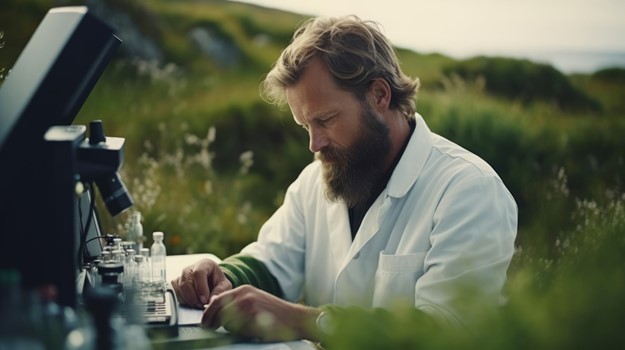In the contemporary era, biodiversity—the intricate web of life on Earth—now faces countless unprecedented threats. Climate change, habitat loss, pollution, and overexploitation of resources are just a few of the challenges that have put the planet’s vast array of life forms at risk. The stakes are high: biodiversity is not only about the beauty and variety of life, but also underpins ecosystem services essential for human survival, such as clean air, water, and fertile soil. Fortunately, in this critical battle to save biodiversity, science and technology have emerged as formidable allies, bringing innovative solutions that offer hope for preserving the planet’s biological wealth. This guide from Stephen Wentzel delves deeper into the cutting-edge technologies and scientific advancements that are making significant strides in conservation efforts worldwide.
Satellite Imagery and Remote Sensing: A Global Watch
One of the most transformative technologies in conservation has been the advent of satellite imagery and remote sensing. Steve Wentzel emphasizes that this technology’s bird’s-eye view of the planet enables scientists to monitor environmental changes over vast areas and inaccessible regions. For instance, NASA’s Landsat satellites and the European Space Agency’s Copernicus program provide invaluable data on deforestation, urban expansion, and the health of aquatic systems. These global observations are crucial for understanding human impacts on natural habitats and guiding policy decisions.
Genetic Tools: Unlocking Conservation at the Molecular Level
Advancements in genetics, including DNA sequencing and CRISPR-Cas9 gene-editing technology, are opening new avenues for conservation biology. Researchers use genetic sequencing to unravel the genetic diversity of species that are vital to conservation strategies, allowing for the enhancement of population resilience. On the other hand, CRISPR technology offers revolutionary potential for addressing genetic diseases in wildlife and assisting species in adapting to changing environments. Stephen Wentzel of Zimbabwe provides the example that scientists are exploring gene editing to protect the American chestnut tree from blight and develop mosquito strains that could help eradicate malaria, demonstrating the far-reaching implications of genetic tools in biodiversity conservation.
AI and Machine Learning: Deciphering Nature’s Data
The explosion of data from remote sensing, genetic studies, and citizen science projects has necessitated advanced data analysis tools. Stephen Wentzel explains how Artificial Intelligence (AI) and machine learning algorithms excel at parsing through massive datasets to identify patterns and insights that would elude human researchers. AI applications range from automating the identification of species in camera trap images to modeling the effects of climate change on biodiversity hotspots. Projects like Microsoft’s AI for Earth provide resources and support for conservationists using AI to tackle environmental challenges, illustrating the technology’s high potential when it comes to accelerating and refining conservation efforts.
Drones: Eyes in the Sky and Beneath the Waves
Drones have become indispensable for modern conservation, offering a versatile platform for aerial surveys, wildlife monitoring, and habitat mapping. They enable researchers to access remote or dangerous areas while minimizing human disturbance to wildlife. Beyond aerial drones, underwater drones are revolutionizing marine biology by documenting coral reefs, monitoring fish populations, and mapping the ocean floor. Steve Wentzel believes these unmanned vehicles are powerful tools for collecting essential data for conserving terrestrial and aquatic ecosystems alike.
Mobile Technology and Citizen Science: Engaging the Global Community
The widespread adoption of smartphones has facilitated a boom in citizen science and conservation apps. Platforms like eBird and iNaturalist leverage the power of citizen scientists to gather observations of birds, plants, and animals from around the world. This crowdsourced data directly contributes to global biodiversity monitoring efforts, engaging the public in conservation and enhancing our understanding of species distributions and phenology. Stephen Wentzel of Zimbabwe understands how conservation apps provide tools for education and engagement, fostering a deeper connection between people and the natural world.
3D Printing and Synthetic Biology: Innovating for Restoration
Emerging technologies such as 3D printing and synthetic biology offer novel approaches to habitat restoration and species conservation. Steve Wentzel explains how 3D printing is being used to create artificial structures that mimic natural habitats, such as coral reefs, to support marine biodiversity. Synthetic biology, meanwhile, holds promise for developing organisms that can detoxify polluted environments or out-compete invasive species, presenting a forward-thinking approach to ecosystem management.
The Path Forward: Challenges and Opportunities
While the integration of science and technology in conservation offers promising solutions, it also presents challenges. Ethical considerations, particularly in genetic manipulation and the use of autonomous systems in natural habitats, require careful deliberation. Stephen Wentzel of Zimbabwe believes the successful application of these technologies largely depends on interdisciplinary collaboration, robust funding, and the development of policies that support sustainable conservation practices.
In conclusion, the fight to preserve biodiversity is one of the most pressing challenges of our time. The innovative use of science and technology in conservation efforts represents a beacon of hope, providing tools and methods that could significantly alter the trajectory of biodiversity loss. Steve Wentzel emphasizes how, as we continue to explore and apply these advancements, it is imperative that we do so with consideration for ethical implications. The goal is to strive for a future where technology and nature coexist in harmony, ensuring the health and vitality of our planet for generations to come.









